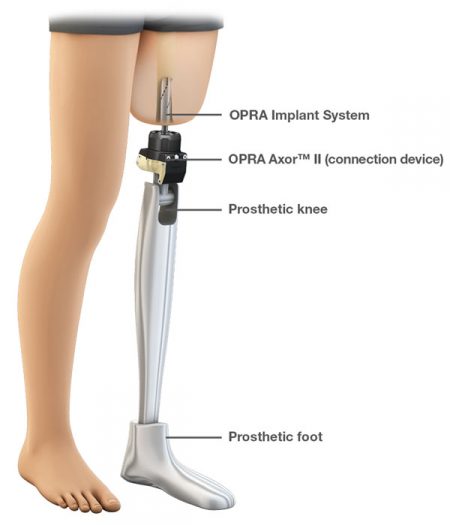Founded in the 1950s, the term osseointegration was coined by Professor Per-Ingvar Brånemark when he discovered the ability to integrate human bone with titanium metal. This discovery was a very important breakthrough in his career and the future of prosthetics. To this day, osseointegration is used to permanently anchor artificial limbs to the human skeleton, typically done in a two-step surgical procedure.
How does the procedure work? The two step procedure consists of the insertion of a titanium metal implant, placed in the bone of a leg or arm. This insertion causes the skin to penetrate, ultimately and easily, attaching the prothesis to the implant with a connector.
Why Choose Osseointegration?
Osseointegration is ideal for patients with severe amputation as it offers many advantages such as, stability, improved movement (for walking and within joints), and a sense of realism. Because the artificial limb is attached right to the bone, many patients feel as though their prosthesis is a part of their body – it feels more natural to them, ultimately contributing to that patient’s quality of life.
Other benefits to note would be: quick to take on/off, safety, security, does not impact skin, increases prosthetic use, and the ability to walk longer distances without discomfort.
Is Osseointegration the Right Choice For Me?
Although there are many advantages to osseointegration, it is not best suited for every patient. The ideal candidate for osseointegration are:
- individuals experiencing issues with their socket (skin problems, pain)
- individuals with limited walking distance due to their socket
- individuals experiencing discomfort when sitting, due to their socket
- individuals who frequently lose their prosthesis during everyday activities
- individuals experiencing back pain from standing for long periods at a time
To learn more, visit the Osseointegration section of our website. We want to help you live your best life, comfortably.






